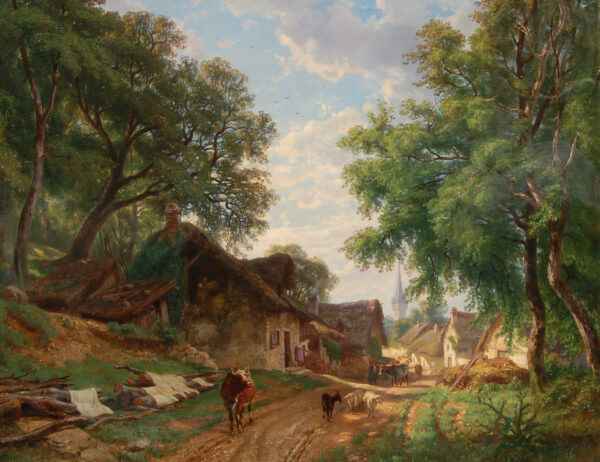Pierre-Georges Jeanniot (1848–1934) was a Swiss-French Impressionist painter, designer, watercolorist, and engraver whose work vividly captured modern Parisian life. Born in Geneva and later based in France, Jeanniot initially pursued a military career, serving as an infantry officer from 1866 to 1881. He fought in the Franco-Prussian War, was wounded at Rezonville, and received the Légion d’Honneur. Despite rising to the rank of major, he resigned in 1881 to devote himself entirely to art—a passion nurtured by his father, Pierre-Alexandre Jeanniot, director of the École des Beaux-Arts in Dijon.
Jeanniot first gained recognition at the Salon de Paris in 1872 with his watercolor Intérieur de forêt, followed by landscapes and portraits that solidified his reputation. His early works often depicted military scenes, such as Les Flanqueurs (1883), which earned a medal at the Salon, and La Ligne de feu (1886), a dramatic portrayal of the Battle of Rezonville. By the 1890s, he shifted focus to Parisian society, painting elegant women, bustling racetracks, and seaside bathers—a reflection of Belle Époque sophistication. His keen observational style and lively compositions drew comparisons to Toulouse-Lautrec and Mary Cassatt.
A versatile artist, Jeanniot excelled as an illustrator, contributing to over 50 literary works, including editions of Zola’s La Débâcle, Maupassant’s Contes choisis, and Hugo’s Les Misérables. He collaborated with avant-garde journals like La Vie Moderne and later directed Journal Amusant. As an engraver, he employed bold woodcut contrasts to satirize Parisian snobbery with wit and precision.
Jeanniot’s friendships with Degas, Manet, and Puvis de Chavannes influenced his dynamic style, blending Impressionist light with realist detail. His works reside in museums worldwide, including Paris’s Musée Carnavalet, the Museum of Pau, and collections in New York and Oslo. Through his paintings, illustrations, and prints, Jeanniot left an indelible record of his era—from the grit of war to the glitter of Parisian society—rendered with technical mastery and irreverent charm.

